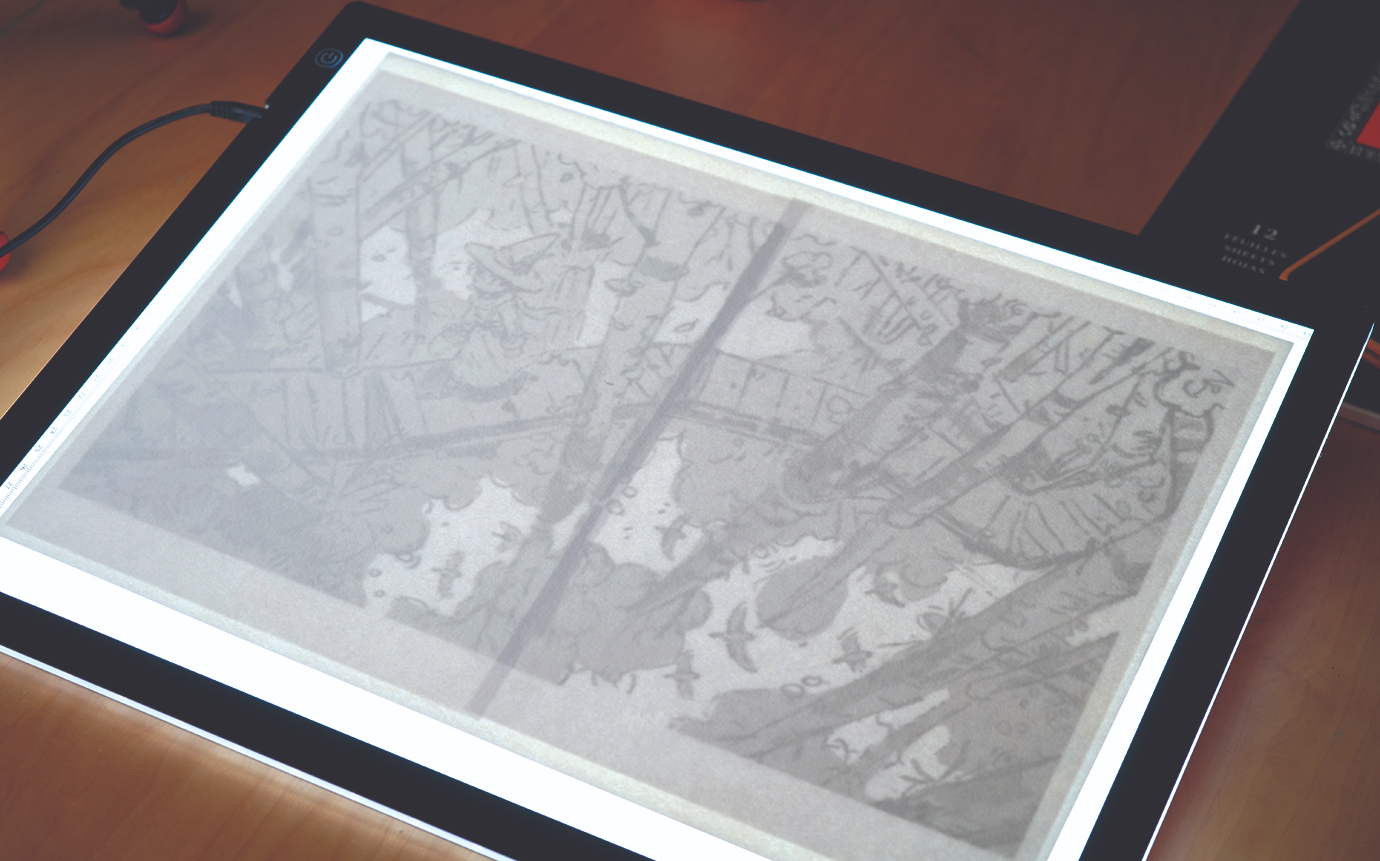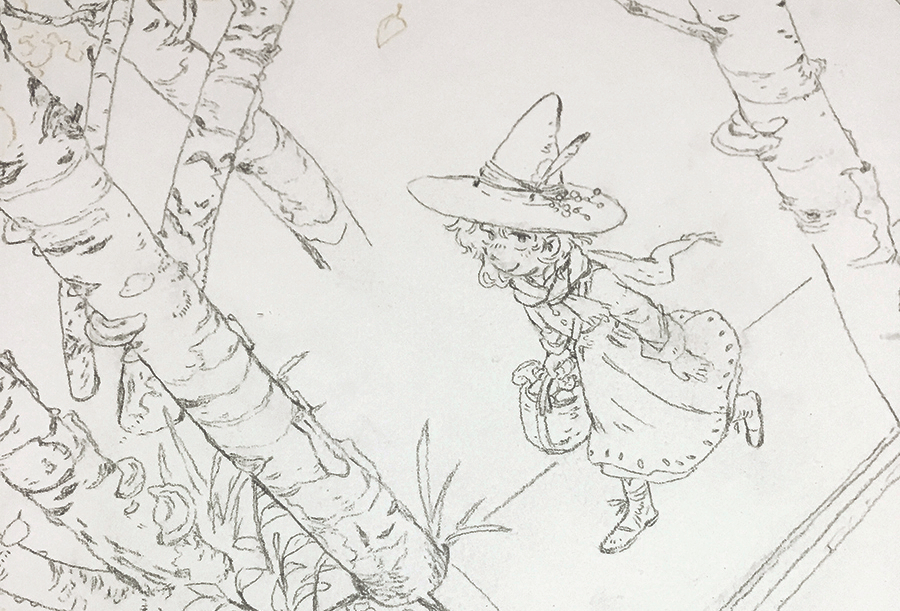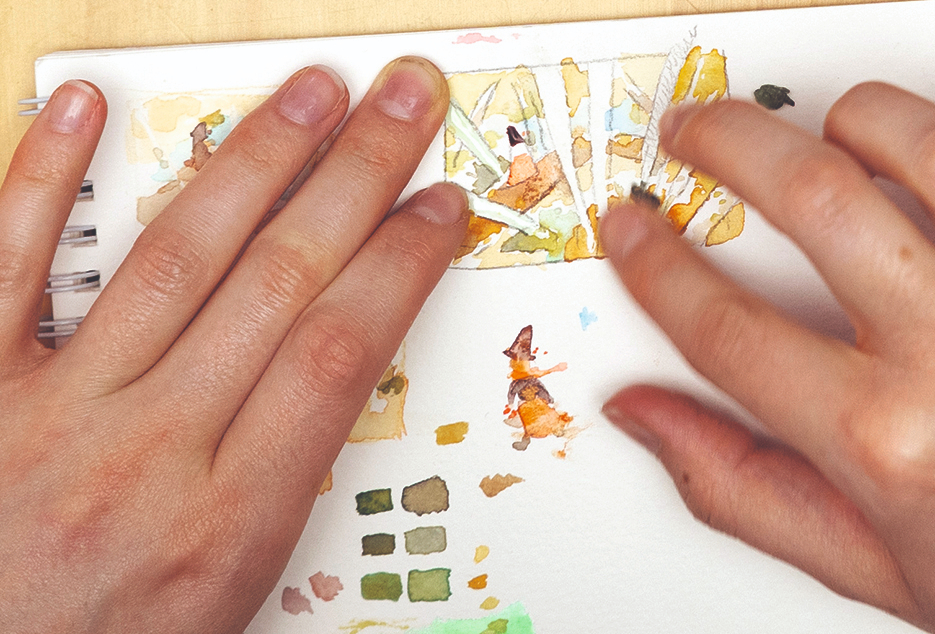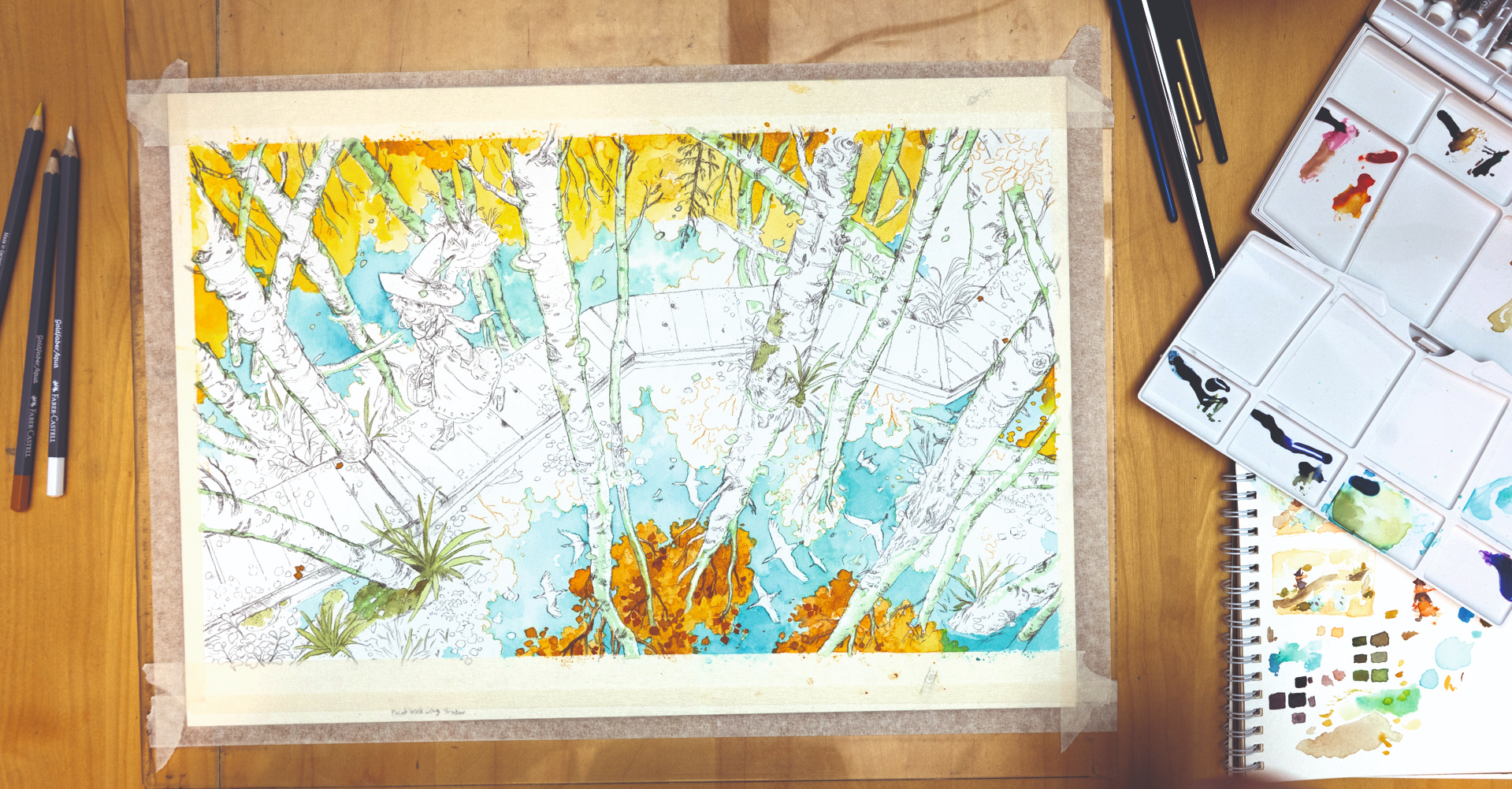Autumn watercolours: How to capture fall
Learn to create a stunning autumn watercolours environment illustration.

Capturing autumn watercolours is a great way to breathe life into your environment illustration and hone your technique. My aim as an artist is always to try and fit as much into the world of my illustrations as possible. Making art reminds me what I'm excited about in life and I want the world I'm creating to reflect that.
The idea for this workshop was sparked from walking in a park near my house. Noticing what you specifically find interesting about the world around you (in cities or nature, or other art) is helpful for any artist developing their taste and style. Think about what you appreciate in your favourite artist's work or the things you like looking at, and how your own taste and experiences come together to create something new.
I like working with traditional line-art and watercolour to allow some exploratory spontaneity and unexpected looseness to the process, and then clean up the final image digitally for nit-picky detailing at the end of the process. Bouncing between traditional and digital tools gives me the best of both worlds, and make up for any difficulties inherent to either medium. Working traditionally for even part of the art process means I can sit at a different desk, easily move and tilt the painting board around to suit my drawing arm, and generally move a little differently than I do while working digitally day to day.
Now let's explore how you can capture autumn watercolours in your own environment. Don't forget to check out this list of watercolour techniques or our how to draw guides to further elevate your skills. Need new gear? See the best watercolour paints.
01. Invest in your workspace and tools

I always recommend buying higher-quality materials for watercolour. Good paints will last years when used carefully, and heavier weight paper won't buckle and wrinkle from the water as much, making learning for any experience level easier. Explore your options with the best watercolour paper guide.
02. Find references around you

Discovering references helps spark ideas I want to use to really bring this painting to life – anything from specific interesting mushrooms to shadow patterns. With all these inspirations in mind, I sketch out various compositions, looking for the best way to fit everything I want into one image.
03. Tie down your sketch

I clean up the sketch just enough to know what to do at the drawing stage. I'm cheating how the reflections would probably work a little bit, but I do want the correct perspective. This simple grid shows what I have in mind.
04. Transfer the sketch

I digitally scale up my rough sketch to print dimensions, print it at full size (A3 here) and tape it down to the back of my watercolour paper. Now it's ready for drawing using my light box.
05. Embrace pencil and paper texture

Although I like the freedom of drawing digitally, I work a bit faster in pencil where I can't make it 'perfect'. I also like drawing on rough grain watercolour paper – it gives some natural jitter and looseness to the line quality.
06. Use a watercolour pencil for lighter lines

Delicate details can be drawn with the lightbox brightness lowered, to make sure I'm drawing clearly even without the sketch. Flipping the drawing over is also helpful for seeing things with fresh eyes while looking for awkward shapes or final adjustments. A regular coloured pencil could be waxy and not allow your watercolour pigment to 'stick' where you've drawn, so don't mix those up. This entire drawing stage takes about 10 hours in total. Take lots of breaks to stretch!
07. Test before final painting

I do a colour study here to check my colours, and figure out the masking fluid process. Knowing what I'm aiming for and what's possible with my paints enables me to have more looseness in the actual execution.
08. Tape down and applying masking fluid

I scan the finished lines in case I make any mistakes with the painting, then tape them down. I mask out small ripples in the water, little leaves and where anything else is in front of areas where I want to paint large washes (the sky and leaves).
09. Put down the initial washes

Getting some initial colour washes down helps lock the pencil and keep it from smudging. This whole painting process takes me about 10 hours to complete.
10. Paint wet into wet

This method enables colours to 'bloom' into each other and blend naturally, and creates a unique texture. Tilting and rotating the paper means you can control where the most pigmented parts of the wash will be.
11. Work with a small number of brushes

I usually stick to one good Round brush for most of the painting, and one or two additional brushes for larger washes or small details. The extra brushes are also good for softening a fresh brushstroke's edges with plain water, without cleaning the paint off my primary brush.
12. Choose your colours

Warm and cool colour contrast that supports my black and white composition/value scheme is the most important thing to me here, rather than any specific colours. I want this to feel like a bright and crisp day, and choose base colours with that in mind.
13. Paint from light to dark

I gradually build up the deepest values throughout the piece. Taking this approach ensures that everything works together for the overall effect of the whole composition, instead of looking disjointed.
14. Work large areas to small details

This is just physically easier, because if you put down details first and then wash over them, they might smudge and bleed. It also helps me focus on the overall look of the whole painting, and how every element works together. Everything is finally coming together at this stage while I'm adding details and darkest colours.
15. Make digital tweaks to luminosity

Finally, I digitally adjust the overall colours and luminosity with Photoshop's Overlay and Multiply layers to preserve the nice textures I built up in the watercolour painting. I also paint in any last details that were lost when scanning the final image. This takes six to seven hours, and then I'm done!
This article originally appeared in ImagineFX, the world's best-selling magazine for digital artists. Subscribe here.
Related articles:
- The best watercolour pencils you can buy right now
- The best watercolour tutorials
- A beginner's guide to watercolour tools
Daily design news, reviews, how-tos and more, as picked by the editors.
